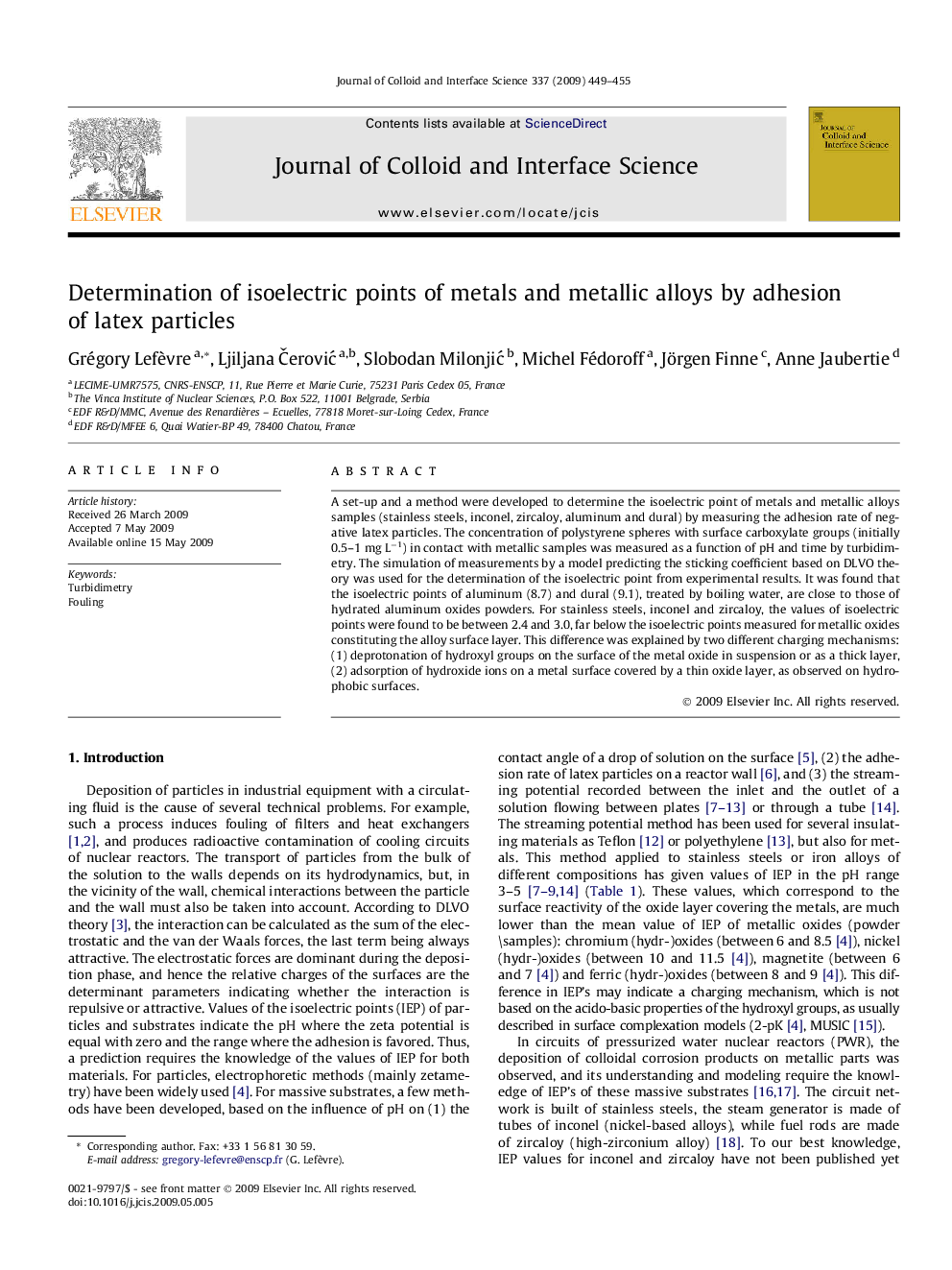| Article ID | Journal | Published Year | Pages | File Type |
|---|---|---|---|---|
| 610551 | Journal of Colloid and Interface Science | 2009 | 7 Pages |
A set-up and a method were developed to determine the isoelectric point of metals and metallic alloys samples (stainless steels, inconel, zircaloy, aluminum and dural) by measuring the adhesion rate of negative latex particles. The concentration of polystyrene spheres with surface carboxylate groups (initially 0.5–1 mg L−1) in contact with metallic samples was measured as a function of pH and time by turbidimetry. The simulation of measurements by a model predicting the sticking coefficient based on DLVO theory was used for the determination of the isoelectric point from experimental results. It was found that the isoelectric points of aluminum (8.7) and dural (9.1), treated by boiling water, are close to those of hydrated aluminum oxides powders. For stainless steels, inconel and zircaloy, the values of isoelectric points were found to be between 2.4 and 3.0, far below the isoelectric points measured for metallic oxides constituting the alloy surface layer. This difference was explained by two different charging mechanisms: (1) deprotonation of hydroxyl groups on the surface of the metal oxide in suspension or as a thick layer, (2) adsorption of hydroxide ions on a metal surface covered by a thin oxide layer, as observed on hydrophobic surfaces.
Graphical abstractInfluence of pH on concentration of negative latex particles in contact with metallic alloys. Dotted lines are extrapolations to determine the isoelectric points of surfaces.Figure optionsDownload full-size imageDownload as PowerPoint slide
